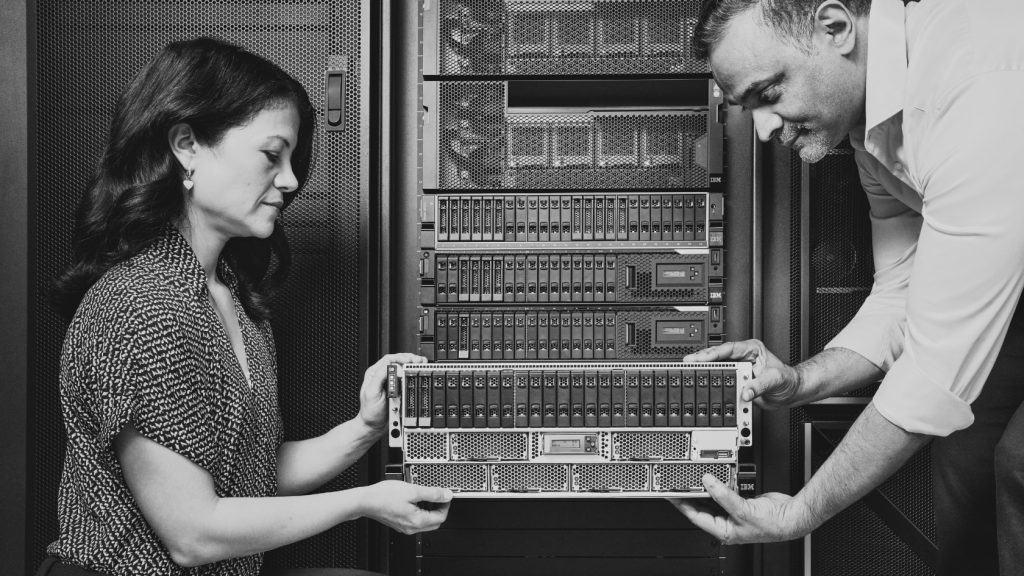India, often recognised as the world’s technology services capital, evokes mixed reactions; some view it as a compliment, while others perceive it as a limitation. The country’s minimal involvement in product development and advanced R&D remains a concern.

In such a scenario, the growing hardware engineering industry brings about a significant shift, as more and more international corporations set up R&D centres here.
IBM’s recent launch of the Power11 server highlights this less-discussed narrative.
Developed with substantial contributions from the IBM India Systems Development Lab (ISDL), the Power11 is the latest version in the company’s high-performance server range, designed for enterprise workloads and delivering reliable AI inference capabilities.
ISDL, founded in India in 1997, is IBM’s largest hub within its infrastructure division, with teams in Bengaluru, Pune, and Hyderabad that focus on hardware, software, cloud, data engineering, ASIC engineering, and other product development. This involves working on the company’s power servers, the Z Mainframe, the Telum processors, and even the Spyre AI accelerators.
“Our teams in India collaborated across the hardware, firmware, and software stack, co-developing the platform alongside global counterparts,” said Subhathra Srinivasaraghavan, VP at IBM ISDL, about the Power11.
“Power11 is built for India’s fast-evolving regulatory and digital landscape, where AI innovation and adoption must go hand-in-hand with data sovereignty,” said IBM.
The company also stated that the server’s on-chip inferencing allows enterprises to run AI models directly where the data is stored — whether in a private data centre or hybrid cloud environments.
“From UPI and 5G to smart manufacturing, e-governance, and others, Indian enterprises operate in environments where downtime isn’t an option,” said IBM, adding that Power11 is designed to be the most resilient server in the history of the IBM Power platform, with 99.9999% of uptime.
The server offers a 25% increase in cores per chip, resulting in improved performance compared to its predecessor, the Power10. IBM also claims that it provides twice the performance per watt compared to comparable x86-based servers. Besides, the Power11 server is also the first to equip IBM’s latest Spyre AI accelerator.
Behind these achievements lies a growing pool of engineering expertise in India that is central to IBM’s global hardware innovation. In an interaction with AIM, Srinivas Bhat, Director of IBM Z Development at ISDL, shed light on the same.
Upskilling the Industry
ISDL’s approach to upskilling engineers and developing chip design talent serves as a notable case study of how a global firm cultivates specialised expertise in India’s growing hardware design industry.
The company’s efforts extend beyond hiring as it provides students with opportunities to upskill. Bhat said the company has collaborated with colleges across the country to enhance the curriculum and improve students’ skill sets in the aforementioned domains. “We want these students to be successful in the industry, even if they don’t join IBM,” he added.
Bhat noted that there is a well-structured skills development program related to the IBM Mainframe Z, which is the company’s enterprise-grade computing platform focused on zero downtime capabilities tailored for mission-critical applications.
These learning paths cover the fundamentals of IBM Z mainframe technology, helping students and industry partners understand these systems, even if they have no prior experience with them.
The company also hosts various programs, both internally and externally, that facilitate talent development. The ‘IBM Z Datathon’, a program conducted by IBM last November in Chennai and Bangalore, saw more than 1 lakh students participate from across the globe.
“The intent was to encourage students to try out the platform with cloud-based environments where AI models were available. They took on some real-life use cases. Some individuals sought to build intelligent farming systems based on weather patterns and rainfall, while others aimed to develop intelligent water distribution systems, among other goals,” said Bhat.
He also mentioned IBM’s collaborations aimed at helping the nation achieve independence in the sector. L&T Semiconductor Technologies and IBM announced plans last September for a collaborative effort to design advanced processors. “The scope of this work could include processor design for edge devices and hybrid cloud systems, as well as for areas like mobility, industrial, energy, and servers,” said the company.
Last March, the company also announced an MoU with the Centre for Development of Advanced Computing (C-DAC), an autonomous scientific society under the Ministry of Electronics and Information Technology (MeitY).
This collaboration aims at developing a working group that advances India’s HPC (high-performance computing) ecosystem. It promotes IBM Power processors, trains developers, supports startup innovation, and collaborates on the development of cutting-edge system technologies.
IBM is also looking to hire across various roles under the ‘Infrastructure & Technology’ teams in India.
A Global Hub
IBM’s ISDL isn’t an isolated entity shaping the narrative of India’s hardware design growth. Other tech giants, including ARM, AMD, Intel, NVIDIA, Texas Instruments, Broadcom, NXP and Samsung have established R&D facilities in India.
According to a report from the Information Technology & Innovation Foundation, India employs approximately 20% of the world’s semiconductor design engineers. The report highlights that American semiconductor company Texas Instruments has approximately 2,500 employees in the country, primarily engineers, and partners with over 1,000 engineering colleges nationwide.
Meanwhile, Synopsys employs more than 5,000 people in the country and collaborates with over 400 universities to foster talent across various fields. Additionally, AMD announced a $400 million, five-year investment in India in 2023 and aims to expand its workforce to 10,000 employees by 2028.
“India, given its tech workforce, overall working population, and the calibre of engineers emerging, presents a phenomenal opportunity for both students and industries here to benefit from,” said Bhat.

